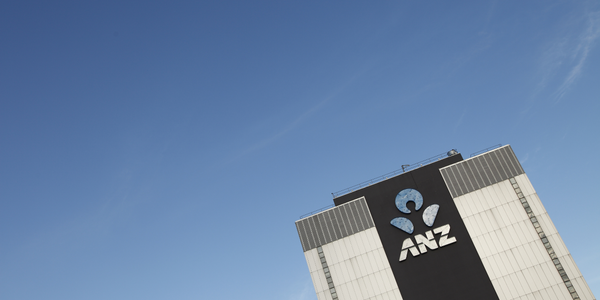Download PDF
Scientific American: Boosting Revenue and Efficiency with Acoustic Campaign
Technology Category
- Application Infrastructure & Middleware - Middleware, SDKs & Libraries
- Sensors - Acoustic Sensors
Applicable Functions
- Sales & Marketing
Use Cases
- Leasing Finance Automation
- Material Handling Automation
Services
- Testing & Certification
The Challenge
Scientific American, a magazine with 9.5 million global readers, was facing a challenge with their email marketing strategy. The magazine was sending out an excessive number of emails, around 11 to 13 million per month, without any segmentation. This approach was not only costly but also inefficient, as it resulted in lower engagement metrics for marketing emails, including the average open rate and click-through rate. The magazine's primary goal was to use email marketing to grow sales, and a secondary goal was to increase profitability by reducing the number of emails being sent. The challenge was to optimize their digital marketing efforts and use their marketing tool, Acoustic Campaign, to its full potential.
About The Customer
Scientific American is the longest continuously published magazine in the U.S., providing its readers with unique insights about developments in science and technology for over 175 years. The magazine offers print and digital subscriptions, eBooks, and newsletters in 14 languages. It boasts 9.5 million print and tablet readers worldwide, over 10 million global online unique visitors monthly, and a social media reach of over 7 million. Despite its long history and large readership, the magazine faced challenges in optimizing its digital marketing efforts, particularly in the area of email marketing.
The Solution
Scientific American decided to streamline their campaign execution with greater automation. They started by creating engagement suppression lists, designed to avoid sending emails to disengaged readers who hadn't opened an email in three months. The magazine also utilized the automation programs of Acoustic Campaign, which significantly reduced the time spent on setting up the framework and flows. A new feature added to the Campaign queries, engagement behavior filters, allowed them to exclude recipients based on engagement during longer-tail campaigns. The magazine also connected the Campaign to their website, triggering a subscription promotion when a non-subscriber visitor views a page. They also implemented A/B testing and used heat maps to track and optimize their metrics. The automation programs also enabled cross-selling, promoting other products to customers who purchased a print or digital subscription.
Operational Impact
Quantitative Benefit
Related Case Studies.

Case Study
Metal Fabrication
As each mast section needs a total of 222 reliable welds, manufacturing them is an extremely labor intensive process.Until recently, STROS had to use highly skilled welders to make these sections. Although it has been using robots for 25 years, these machines could not manage the complex arc welds in narrow spaces needed for these particular components. Consequently, in order to produce a satisfactory number of mast sections it had to employ three welders per shift at three separate workstations to make these pieces. Apart from the obvious outlay this required in terms of manpower and space, STROS found it increasingly difficult to recruit the highly qualified welders needed for this work. That's why in 2007 the company decided to hold a tender for the complete robotization of its manufacturing process for mast sections. Of the four firms who participated, only the ABB group could fulfill all its requirements.

Case Study
Digital Transformation in Insurance: A Case Study of Menora Mivtachim
Menora Mivtachim, one of Israel's largest pension fund and insurance carriers, was facing a significant challenge due to demographic trends in Israel. The growing rate of retirement planning and services was putting unprecedented pressure on the already strained insurance sector. The pension claims process was bottlenecked with complexities, bureaucracy, and errors. Menora Mivtachim's existing pension process was heavily manual and spreadsheet-based, requiring a team of 10 full-time employees to manage. The process involved gathering applicant information, conducting personal surveys, compiling bank information, and finalizing agreements. To leverage the growing opportunity in the retirement sector and position themselves as innovative insurtech leaders, Menora Mivtachim needed to digitalize their process, streamline the claims experience, and reduce quote times through automated processes.

Case Study
Automation in Mining: Unleashing Productivity and Efficiency with 5G
The mining industry, a significant contributor to global economic activity with revenues exceeding USD 500 billion, is facing a challenge of improving efficiency and profitability. The industry is gradually shifting its focus towards automation as the next area of opportunity. Boliden, one of the world's most successful mining companies, operates the Aitik mine, the largest open pit in Europe. The Aitik mine is expanding, and with the increase in production from 36 million metric tons of ore to 45 million metric tons, the amount of rock removed will also increase significantly. However, increasing the number of machines required for rock removal in a busy mine is not a straightforward task. Additionally, every blast creates toxic gases that need to dissipate before humans can enter the area and begin excavation. The challenge lies in improving efficiency, managing the increased production, and ensuring safety in the harsh mining environment.

Case Study
ANZ Bank's Digital Transformation with Nintex Advanced Workflow
ANZ Bank, one of the top 50 banks in the world and the fastest-growing bank in Indonesia, was facing a challenge with its rapidly increasing transaction volume. The bank's existing business processes and workflow were becoming overwhelmed. Like most banks in Indonesia, ANZ was manually handling document submission and verification. Customers filled out paper loan applications and supporting documents, then delivered them to bank branches by mail or courier. Branch officers traveled to the bank’s headquarters or used postal mail, email, and phone calls to submit loan documents for verification. Lost or inaccurate documents created more emails and phone calls. Additionally, ANZ had to adhere to strict verification and financial regulations, including the Foreign Accounts Compliance Act. This act requires that all banks outside the United States provide key information about U.S. clients, including citizenship validation, to the Internal Revenue Service–a complex yet crucial process.

Case Study
Conveyor Belt Monitoring
In a smart environment of management, control and industrial automation, one of the key elements to anticipate failures and increase productivity is to be able to monitor the status and use of conveyor belts of any kind of sector, whether it is for logistics or manufacturing.






